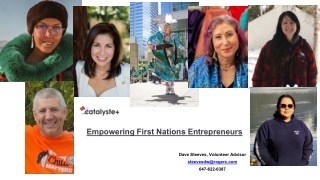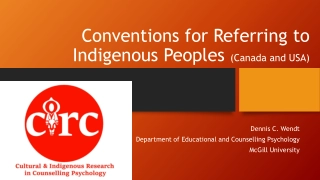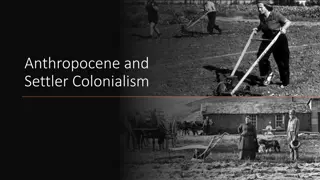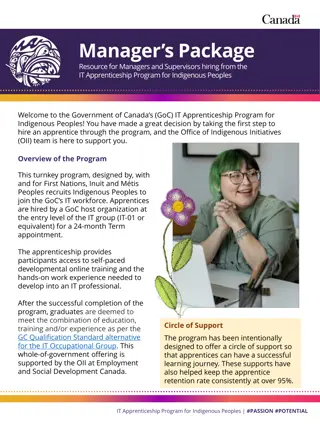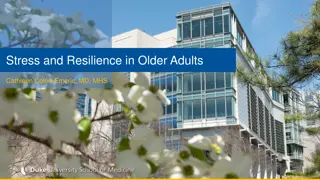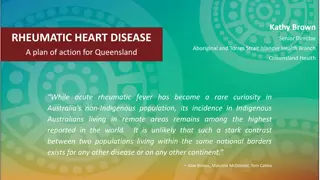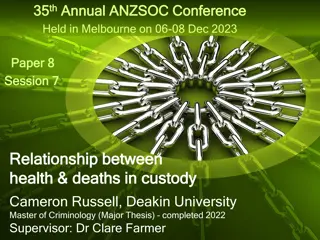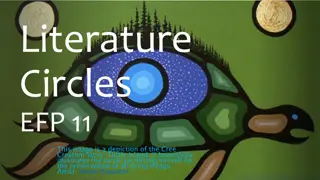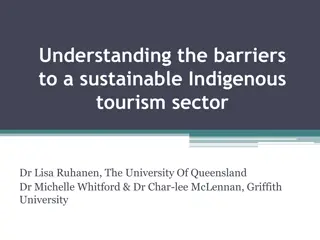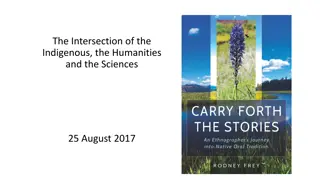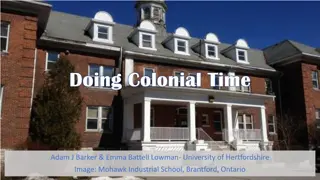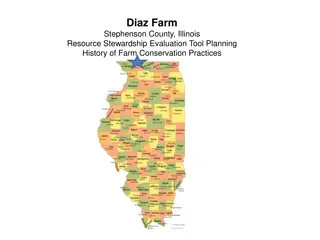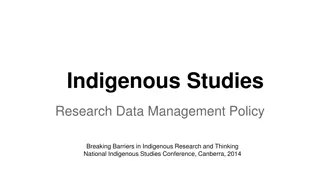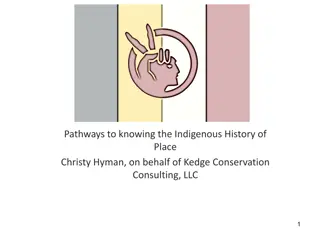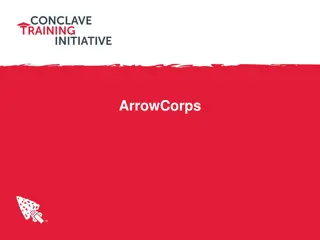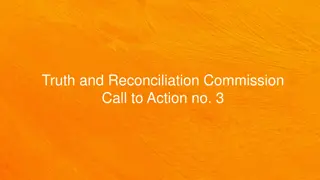Victories in Indigenous-Led Conservation: A Story of Partnership and Resilience
Explore the triumphs and challenges of Indigenous-led conservation efforts in Canada through community-based initiatives, the establishment of Indigenous Protected and Conserved Areas, and programs like the Guardian and Watchmen Program. Learn about the significant milestones, definitions of key terms, and the interconnectedness of political, economic, social, and traditional factors that shape this crucial work towards environmental stewardship.
Download Presentation

Please find below an Image/Link to download the presentation.
The content on the website is provided AS IS for your information and personal use only. It may not be sold, licensed, or shared on other websites without obtaining consent from the author.If you encounter any issues during the download, it is possible that the publisher has removed the file from their server.
You are allowed to download the files provided on this website for personal or commercial use, subject to the condition that they are used lawfully. All files are the property of their respective owners.
The content on the website is provided AS IS for your information and personal use only. It may not be sold, licensed, or shared on other websites without obtaining consent from the author.
E N D
Presentation Transcript
Beyond the tensions Victories in Indigenous-led conservation. Bobbie Mang eli with Dr Stephane McLachlan
Milestones Definition of terms What are the tensions? What does Indigenous-led conservation look like in Canada? A tale of two communities What is victory?
Definition of terms Conservation In Manitoba ...oversees that province's environmental stewardship, species at risk, provincial parks, forestry, and other matters related to Manitoba's biodiversity of natural resources. Indigenous-led Beyond partnership and not solely community based, but pace, priorities and planning decided by community.
Indigenous Protected and Conserved Areas Places determined through community planning where lands and waters they want to include as IPCAs are included. These areas Indigenous laws and traditions and ensure Indigenous Peoples can maintain our relationship with these lands. They are Indigenous-led They represent a long-term commitment to conservation They elevate Indigenous rights and responsibilities
Tensions Political, economic, social, traditional
Interconnectedness Economic Sustainable wage, partnerships, weighing industry opportunities Political Traditional Short terms for leaders, high turnover, dominant policy paradigm Land based culture and practices Social Conflicting interests
What does Indigenous-led conservation look like in Canada?
Guardian and Watchmen program Through Parks Canada Career training Knowledge sharing through interactions and interpretive style presenting Haida Gwaii Watchmen, Pacific Rim Unit and others
Guardians Pilot Program Federal government funding (2017, $25m, 4yr) and (2021, $100m, 5yr) Focus on relationships Projects for elders and youth on forest stewardship, biodiversity, economic development, monitoring, controlling overhunting, and overfishing, protecting the land.
Land Guardians Program Focus Nationhood Diversity of programs Employment Youth Involvement Use of western and Indigenous Science
Indigenous Circle of Experts Canada Target 1 in the spirit and practice of reconciliation Canada s Conservation Vision - legal frameworks and long term actions We rise together - gatherings, practical steps and opportunities
A tale of two communities Taita Taveta and Swan Lake First Nation
Swan Lake First Nation Located in southwestern Manitoba. Population of approximately 600 on reserve. Led by Chief Jason Daniels along with other Councillors Overview of issue Encroaching farmland Run-off from nearby farms into lake Enbridge pipelines Climate change effects water levels
Taita Taveta Taita Taveta County is located in the coastal region of Kenya approximately 360 km southeast of Nairobi Population of about 284,657 Mostly nomadic population Overview of issue National infrastructure (northern corridor railway, hydro corridor, mombasa-nairobi highway, moshi- taveta highway) Subsistence farming Wildlife corridor
What is victory? It may not be what you expect
Politically Moving enforcement to the guardians program Having environmental programs removed outside of chief and council Privatizing conservation process (although be wary, must follow OCAP) Reframing regulations Recognition of nationhood (avoiding pan-Indigenous solutions) Budgeting for conservation human implications Government led education for human-wildlife conflict Reframing displacement procedures (Koru example)
Economically Employ community members to monitor pipelines and manage spill sites Rent out 30 acres of land to a potato farmer for additional income Designate specific areas for economic tourist activities (hotels, safaris) Create business kiosks at busiest junctions and train station
Environment Restrict pipelines to specific routes based on ground water mapping Build a dam and create a wetland to sequester nutrients from run off of other farms Negotiate spraying times with nearby farmers Watch beavers and act accordingly Land use - leaving some areas undeveloped Create wildlife bridges under train infrastructure Encourage farmers to diversify crop and invest in bees
Wildlife under passes in Taita Taveta Bee fences in Taita Taveta Princess Creek Dam at Swan Lake First Nation
Traditional Honouring the following teachings shared by both communities Respect Honesty Truth Land claims, reconfiguring ownership, discussion around those conversations Real consultation Real inclusion, power to say NO Land sharing, beyond museum-like conservation
Milestones Definition of terms What are the tensions? What does Indigenous-led conservation look like in Canada? A tale of two communities What is victory? Conservation has many faces, we should welcome all of them


